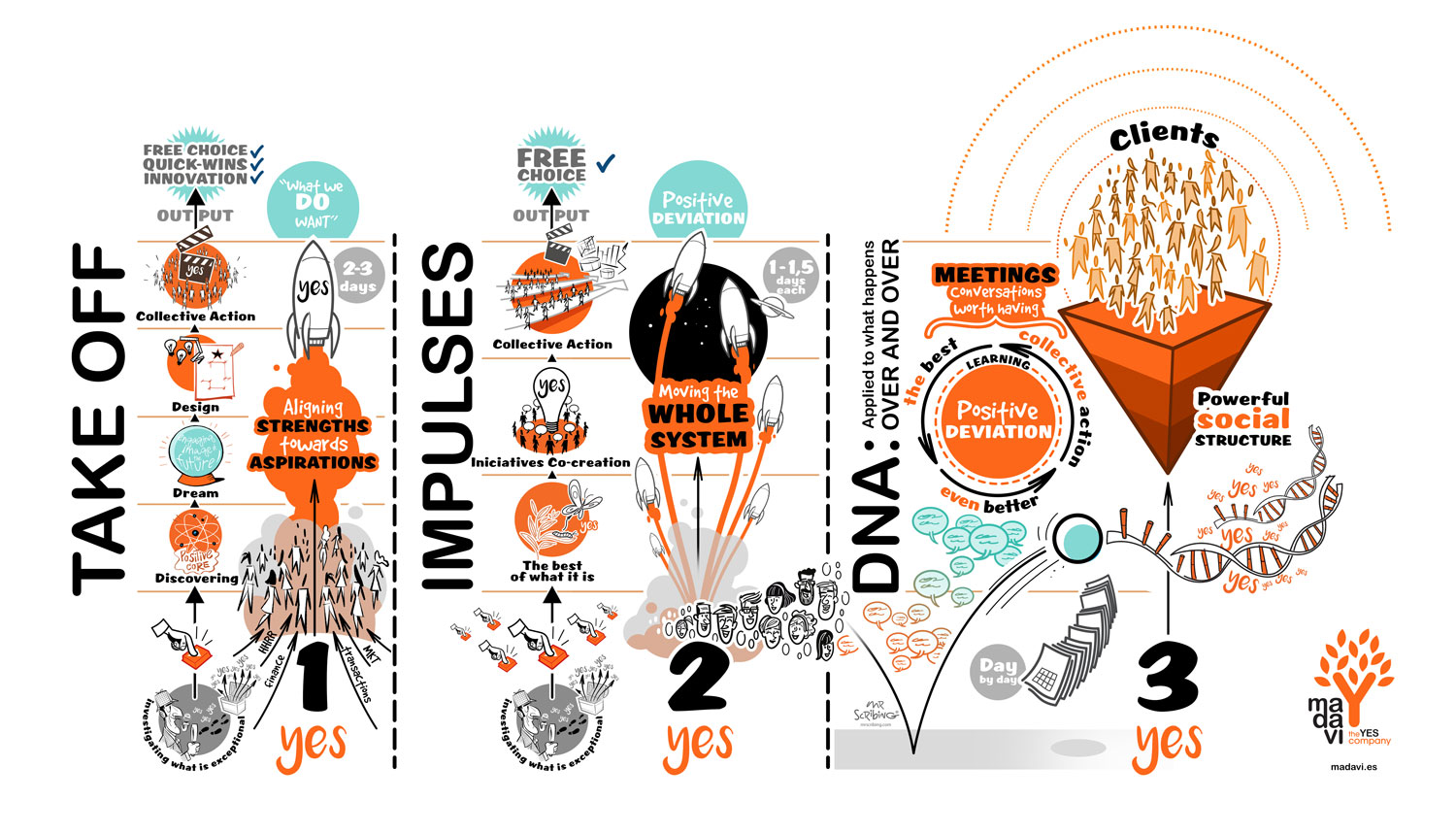To see the glass half-full or half-empty is the old story of the pessimists and the optimists, although if we had to enter this dichotomy we would side with the optimists without a shadow of a doubt.
Fundamentally to see the glass half-full or half-empty is a static view of the situation. The optimist sees it from the “I like it” stance and the pessimist from the “I don’t like it” stance. But where is the action?
The dilemma in reality is much more interesting. From an appreciative point of view, the way to confront it is independent of the amount of water that there is at that moment. In reality the situation is already given whatever we say.
If the aim is to fill the glass, or even better, to fill up an even larger glass, the most productive path is to investigate “what made” the water enters the glass with the aim of increasing the flow until it spills over. To appreciate is to see the potential that surrounds us in order to activate it.
Appreciative inquiry is changing the way in which we change, concentrating our efforts in discovering “the best of what is” and to maximize the strengths and resources in the know how so as to achieve exceptional results. It is not worthwhile to only bet for a small gain.

